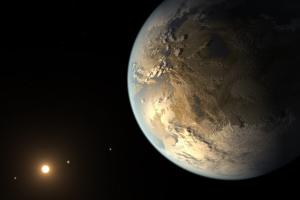NASA announces that it has found ten rocky, Earth-like planets in our Milky Way Galaxy that could potentially support alien life. The discovery raises the possibility of finding life outside our planet Earth.
On Monday, the US space agency released a report of 219 potential exoplanets - worlds outside our solar system -lurking around our galaxy. The newly discovered planets had been observing by Kepler space telescope since its first four years in space. In total, Kepler found 4,034 candidate planets during its mission, 2,335 of which were detected in numerous observations.
The ten newfound Earth-like planets are still under surveillance by scientists. They are still determining if those planets can support alien life.
"Are we alone? Maybe Kepler, today, has told us indirectly, although we need confirmation, that we are probably not alone," Kepler scientist Mario Perez said in a news conference.
Since its launching in March 2009, the $600 million Kepler mission has been successfully locating Earth-like planets in our Milky Way Galaxy. After more than eight years in space, the space observatory has detected more than 4,000 alien worlds outside our Solar System.
Scientists are looking for planets in the so-called habitable zone around their stars. This zone is where the temperature is just right for liquid water to exist on a planet's surface.
According to Philip Ball, author of the book, "Life's Matrix: A Biography of Water," water is essential for a particular kind of chemistry that makes life possible. Liquid water is considered as a universal solvent and a mediator of life's chemical reactions.
Meanwhile, back in October 2015, the internet was abuzz when astronomers announced that they had found strange signal coming from a gargantuan "alien mega-structure."
Based on Kepler Space telescope's findings, the light of star KIC 8462852 was being blocked by an alien mega structure. Studies showed the light from the star dipped by as much as 20 percent and didn't conform to patterns of other stars. Also, experts quickly concluded a planet can't block that huge amount of life.
Scientists still determine what is causes the dimming of light. Astronomer Jason Wright of the University of California, Berkeley postulated an alien mega-structure could be harvesting energy from the star KIC 8462852 that causes the dipping of light.
For the part of young-Earth creationist Ken Ham, he says scientists should seek God instead of looking for alien that could nowhere be found.
"Instead of seeking for a twin to earth and intelligent alien life, these researchers should seek the Creator who loves them and died for them," he writes on his website. He also says the Creator actually came from planet Earth as the God-man and sacrificed himself for the salvation of our souls.

















